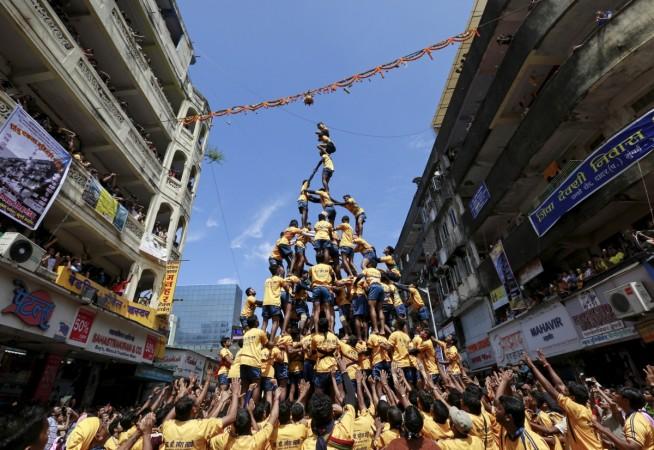
Govindas — people participating in the iconic dahi-handi festivities usually held in Maharashtra — on Thursday protested in various manners while taking part in the Krishna Janmashtami celebrations against the Supreme Court order from a day earlier that had capped the maximum height at which the titular dahi handi could be hung at 20 feet by rejecting a petition to increase the height.
The Govindas were seen using a ladder instead of forming the usual human pyramid to reach the earthen pots hung high above the ground, while some waved black flags in protest against the apex court's decision. In another instance, they flouted the Supreme Court's order and made a 40-foot human pyramid to reach a dahi-handi.
Meanwhile, one person was even spotted wearing a t-shirt that said in Marathi: "Mi kayda modnar [I will break/bend the law]."
While this individual could be held in contempt of court if the SC takes suo motu cognizance of the offence or is approached by a petitioner over it, even the police could be pulled up for standing by.
Interestingly, the protesters are said to have received political support in their show of dissent on Thursday, and the needle of suspicion is towards the Maharashtra Navnirman Sena (MNS), a right-wing outfit founded by Shiv Sena founding leader Bal Thackeray's nephew Raj Thackeray, and one that has been known to constantly stir the sentiments of the "Marathi manoos" — the local Marathi populace, which it sees as bankable voters.
It's supposed support to Thursday's protest could be stemming from the fact that the Marathis view the Supreme Court order on the height cap as a dampener in local celebrations that are deep-rooted in Marathi culture and Hindu mythology.
Dahi-handi celebrations in Mumbai, however, have been a dangerous affair for many, with at least one person dying and 129 sustaining injuries last year alone.
Perils of a human pyramid
The human pyramid is made dangerous by every level that is added to it, because while the people at the bottom have to shoulder more weight, everyone has to keep their balance, and it always has to be a child at the top — because they are not only nimbler but also lighter, which means less strain on those below.
It takes only one person to fail for the entire pyramid to come crashing down. And while those at the bottom are usually hurt the most because people fall in a pile over them, the children at the top are also exposed to danger as they fall from a greater height.
See the different forms of protests by the Govindas here:
















